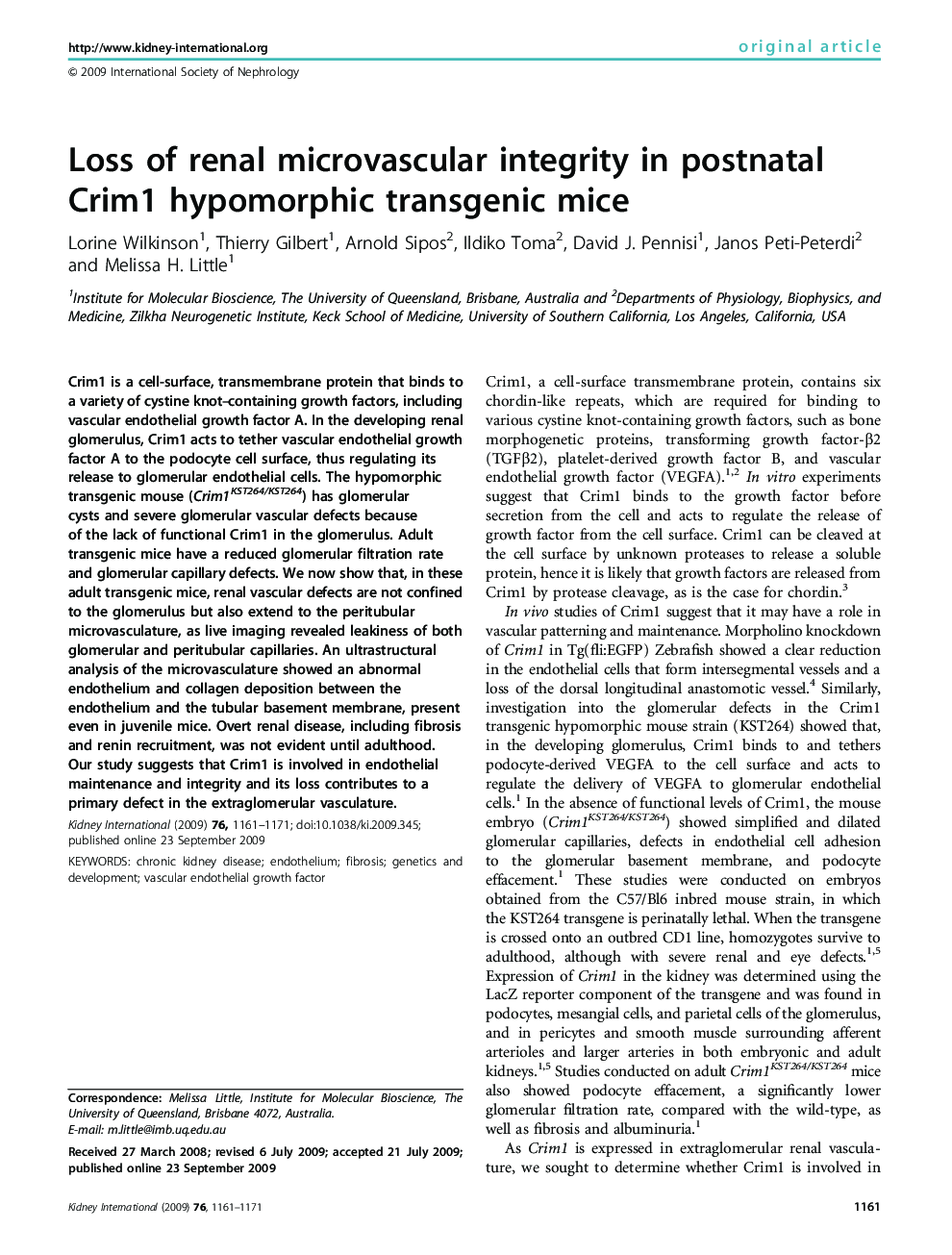| Article ID | Journal | Published Year | Pages | File Type |
|---|---|---|---|---|
| 3885441 | Kidney International | 2009 | 11 Pages |
Crim1 is a cell-surface, transmembrane protein that binds to a variety of cystine knot–containing growth factors, including vascular endothelial growth factor A. In the developing renal glomerulus, Crim1 acts to tether vascular endothelial growth factor A to the podocyte cell surface, thus regulating its release to glomerular endothelial cells. The hypomorphic transgenic mouse (Crim1KST264/KST264) has glomerular cysts and severe glomerular vascular defects because of the lack of functional Crim1 in the glomerulus. Adult transgenic mice have a reduced glomerular filtration rate and glomerular capillary defects. We now show that, in these adult transgenic mice, renal vascular defects are not confined to the glomerulus but also extend to the peritubular microvasculature, as live imaging revealed leakiness of both glomerular and peritubular capillaries. An ultrastructural analysis of the microvasculature showed an abnormal endothelium and collagen deposition between the endothelium and the tubular basement membrane, present even in juvenile mice. Overt renal disease, including fibrosis and renin recruitment, was not evident until adulthood. Our study suggests that Crim1 is involved in endothelial maintenance and integrity and its loss contributes to a primary defect in the extraglomerular vasculature.
